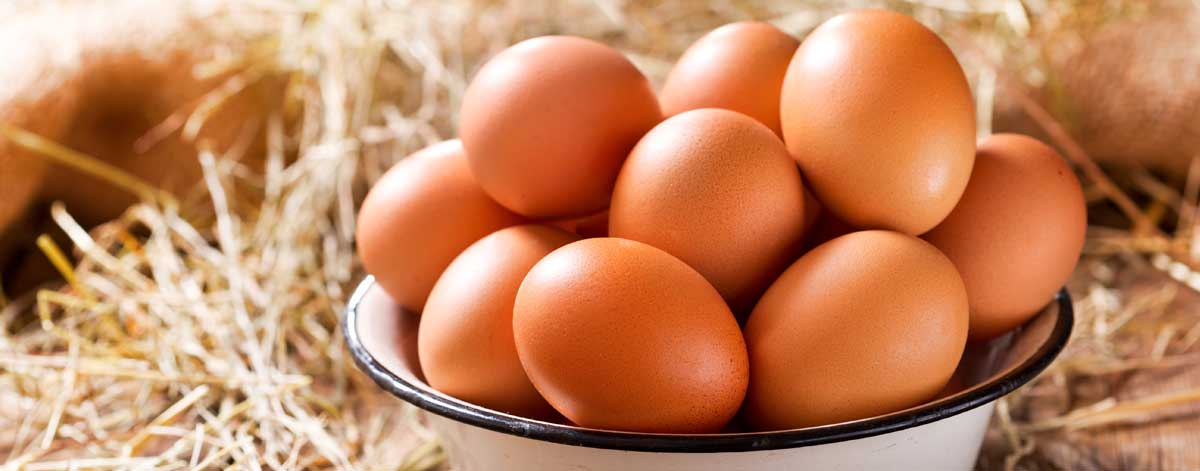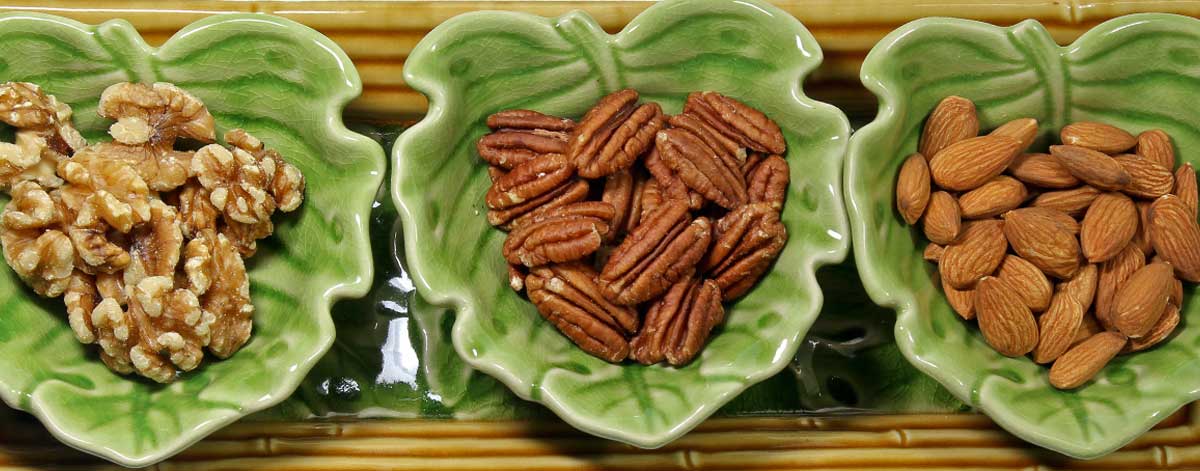Meat, Fish, And Eggs
 Protein is a very important part of any diet, but this is particularly true for the Candida diet. When you are restricting carbohydrates, those missing calories will need to come from a combination of fats or protein. Cutting carbohydrates can be a big change but remember – this is not a weight loss diet. Even though you’re eating fewer carbs, you should make sure you are eating enough calories.
Protein is a very important part of any diet, but this is particularly true for the Candida diet. When you are restricting carbohydrates, those missing calories will need to come from a combination of fats or protein. Cutting carbohydrates can be a big change but remember – this is not a weight loss diet. Even though you’re eating fewer carbs, you should make sure you are eating enough calories.
There are a few things to keep in mind when you are buying proteins.
- Look for foods that are nutrient-rich and as fresh as possible
That might mean buying organic, or local, or just working with a trusted butcher or fishmonger. - Avoid any added ingredients in your meats
Common examples are dextrose, nitrates, and sulfates. Processed meats should be completely eliminated (don’t let anyone tell you that bacon is healthy!) - Watch out for contaminants in fish
Some fish contain much, much higher levels of toxins than others. Tuna and swordfish are the most commonly cited examples (18). These toxins (particularly mercury and other heavy metals) can weaken your immune system and leave you more vulnerable to pathogens like Candida. - Eggs are your friend
There is no better source of protein than organic, free-range eggs. Eggs are a nutritional powerhouse and you should feel comfortable eating several per day if you choose. - Don’t eat too much red meat
If you prefer to eat red meat, be aware of the side effects that it can have on your digestion and health. Red meat can cause constipation and has been linked to various cancers of the gastrointestinal tract. Limit your quantities, and look for pasture-raised, hormone-free meat where possible. - Don’t forget bone broth.
If you’ve been suffering from Candida overgrowth, chances are that your gut needs some support. Candida has been shown to damage the gut lining, which can lead to further symptoms like food sensitivities. Bone broth contains compounds like collagen, glutamine, glycine, and proline, all of which can help to restore the health of your gut (19, 20).
Here are some tasty recipes that incorporate meat, fish, or eggs:
Kimchi meatballs
Chicken piccata
Baked eggs skillet
Sardine nicoise salad/
Kimchi meatballs
Chicken piccata
Baked eggs skillet
Sardine nicoise salad/
Dairy Products
 The best dairy products to eat are the fermented ones. Live probiotic cultures help your gut to repopulate with good bacteria, while the fermentation process reduces the sugar content in the food. There are two great examples of probiotic dairy foods, and you can include them both in your Candida diet.
The best dairy products to eat are the fermented ones. Live probiotic cultures help your gut to repopulate with good bacteria, while the fermentation process reduces the sugar content in the food. There are two great examples of probiotic dairy foods, and you can include them both in your Candida diet.
Probiotic yogurt is perhaps the most easily available probiotic food. You can find it in any supermarket, often under multiple brand names. When you buy it, make sure it contains live cultures – it should say that somewhere on the packaging. Also be sure to buy a yogurt without added sugar or flavorings. Plain, probiotic yogurt is what you’re looking for.
Kefir is more of a specialty item but is rapidly increasing in popularity. If you haven’t tried it before, it’s a milk-based fermented drink that is like a tangier version of yogurt. Kefir generally contains a different set of probiotic strains than yogurt does. There’s no reason why you can’t include both in your diet.
Here’s a list of the probiotic strains often found in milk kefir. Note that these include some strains of beneficial yeast (not all yeasts are opportunistic pathogens like Candida albicans!)
Lactobacillus acidophilus, Lactobacillus brevis, Lactobacillus casei, Lactobacillus delbrueckii subsp. bulgaricus, Lactobacillus delbrueckii subsp. delbrueckii, Lactobacillus delbrueckii subsp. lactis, Lactobacillus helveticusLactobacillus kefiranofaciens subsp. kefiranofaciens, Lactobacillus kefiri, Lactobacillus paracasei subsp. paracasei, Lactobacillus plantarum, Lactobacillus rhamnosus, Lactobacillus sake, Lactococcus lactis subsp. cremoris, Lactococcus lactis subsp. lactis, Lactococcus lactis, Leuconostoc mesenteroides subsp. cremoris, Leuconostoc mesenteroides subsp. dextranicum, Leuconostoc mesenteroides subsp. mesenteroides, Pseudomonas, Pseudomonas fluorescens, Pseudomonas putida, Streptococcus thermophilus, Candida humilis, Kazachstania unispora, Kazachstania exigua, Kluyveromyces siamensis, Kluyveromyces lactis, Kluyveromyces marxianus, Saccharomyces cerevisiae, Saccharomyces martiniae, Saccharomyces unisporus
One of the advantages to fermented dairy products is that you can make them at home. Fermenting your own yogurt or kefir is really easy and absolutely anyone can do it.
Other dairy products are more complicated. Butter and ghee are acceptable because they are low in lactose (especially ghee). Some cheeses might be OK on the Candida diet, particularly those that are low in lactose, but these cheeses still likely contain large amounts of casein. Milk is generally off the menu, again because of the lactose and casein. Lactose is a natural sugar and casein is a protein that is responsible for many dairy intolerances.
Also be aware that organic dairy products are a much better choice. Non-organic dairy products tend to contain hormones and antibiotics that can play havoc with the gut, and prevent long-term healing.
Here are some recipes that use fermented dairy products:
Apple walnut yogurt parfait
Buffalo cauliflower florets
Mediterranean zucchini dip
Apple walnut yogurt parfait
Buffalo cauliflower florets
Mediterranean zucchini dip
Nuts And Seeds
 Nuts are a nutritious way to boost your calorie intake now that you’ve committed to reducing the number of carbs that you’re eating.
Nuts are a nutritious way to boost your calorie intake now that you’ve committed to reducing the number of carbs that you’re eating.
Most nuts are fairly low in carbs, and the portion sizes tend to be relatively small anyway. There are a few nuts that are in fact high in net carbs (cashews and pistachios, for example), so you should be mindful when eating those. Pecans and Brazil nuts tend to be lowest in net carbs.
Mold is another consideration when we discuss nuts. Most nuts do contain at least some mold, which has the potential to be troublesome for Candida sufferers. This is not because mold ‘feeds the Candida’, as you might have read elsewhere. The concern is that Candida sufferers are particularly sensitive to mold exposure, and the mold in the nuts may trigger a reaction.
This is something of a grey area. Many Candida dieters eat plenty of nuts without having any issues at all. For vegetarians in particular, they form a very important part of the diet.
If you are concerned about mold exposure from the nuts you are eating, the best thing to do is to soak them in water overnight. Alternatively, you can spray them with a little Grapefruit Seed Extract, an antifungal the will quickly deal with any residual mold. The nuts most affected by mold tend to be cashews, peanuts, pecans, and pistachios.
For baking, almond flour and coconut flour are healthy options and very low in net carbs. They are often combined with a pseudo-grain flour like buckwheat.
Here are a few recipes that incorporate nuts and seeds:
Cool almond mint smoothie
Almond coconut tart crust
Cinnamon pecan crumb cakes
Bircher muesli
Cool almond mint smoothie
Almond coconut tart crust
Cinnamon pecan crumb cakes
Bircher muesli
Herbs, Spices, And Condiments
 There are a couple of reasons why herbs and spices are an important part of your Candida diet.
There are a couple of reasons why herbs and spices are an important part of your Candida diet.
First, they add flavor to your foods. This is especially important if you’ve been eating a lot of processed food up until this point. When you take out toxic flavorings like high fructose corn syrup and MSG from your diet, herbs and spices can fill the gap. It can be as easy as spreading some basil pesto on your chicken.
Second, herbs and spices have a whole host of other health benefits. Besides containing virtually no carbohydrates, they can reduce inflammation, improve circulation, support your liver, and much more.
It’s not always possible to find good quality herbs and spices in your local supermarket. The spices there have likely been packaged and stored for a long time, often in excess of a year. By that point, the spices are stale, possibly moldy, and have lost much of their flavor and health benefits.
Better places to shop for herbs and spices include ethnic shops and spice merchants. You can also find them online from reputable suppliers. Look for somewhere that has a high turnover – their herbs and spices will likely be fresher and higher quality.
Let’s take a look at a couple of spices that you can include in your Candida foods to eat list, and how they might help to fight a Candida overgrowth.
Turmeric is a culinary spice that has some remarkable health-promoting properties. It’s active ingredient, curcumin, has been shown to be a potent antioxidant, reduce inflammation, and help with conditions such as metabolic syndrome (21). It’s also an antifungal that has been shown to inhibit the growth of Candida albicans (22).
Comments
Post a Comment